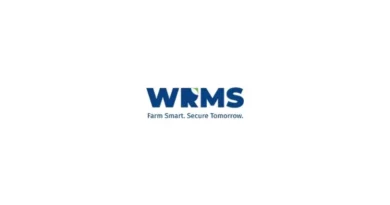The Role of Drone technology in Indian farming and agriculture
Guest author: Mr. Anuj Kumbhat, Founder & CEO, WRMS
20 October 2022, New Delhi: 18% of India’s GDP is contributed by the agricultural industry. We still needs to increase productivity and efficiency of the agriculture industry to bring it at global level. There are a number of aspects and issues that need to be recognised, supported, and addressed with right solutions.

Currently, inappropriate techniques are used for a wide range of critical farming activities, including crop monitoring, irrigation, pesticide application, and many others. The return on investment often declines because resources are insufficient, are not allocated according to weather conditions, or are not fully utilised.
Multiple opportunities for technological advancement have been made possible by such limitations. Since its inception, technology has always had a positive impact on the agricultural industry. The need to tackle some challenges became more pressing as governments and businesses nationwide realised the importance of food security and the effects of environmental deterioration, pollution, and water scarcity.
What role do drones play in Indian agriculture?
Considering its diversity and potential for the agrarian community’s future, drone technology has been the focus of industry’s attention. Drones encourage farmers to overcome other obstacles and profit greatly from precision agriculture and improve overall performance. The market for agricultural drones has grown to a staggering $1.3 billion, and UAVs (unmanned aerial vehicles) fill the gaps left by traditional farming systems’ human error and inefficiency. Drone technology is being used to eliminate all ambiguity and guesswork and instead concentrate on precise and trustworthy information.
In farming, external factors like weather, soil properties, and temperature are crucial. The data collected by drones help to regulate crop health, crop treatment, crop scouting, irrigation, and carry out field soil analysis and crop damage assessments. The drone survey helps boost crop yields and minimises time and expenses.
Drones can be used to carry out a number of agricultural tasks like spraying pesticides, assessing soil health, crop nutrition, monitoring and analysing field moisture, etc.
It is anticipated that by 2050, there will be 9 billion people in the world. Additionally, it is estimated that agricultural consumption will rise concurrently by around 70%. Because of its benefits, drone technology that includes AI, ML, and remote sensing capabilities is becoming more and more popular.
Drones can help farmer in monitoring irrigation, surveillance of crop health, crop damage analysis, analysis of soil health, planting seed pods, agrochemical spraying, livestock tracking.
The farmer as a result of the above activities through drones will be able to achieve higher production, can safely use chemicals, have a quick decision-making process through available data, reduced resource wastage and get insurance claims in favour.
Agricultural drone technology will shape the future of India’s rural population without a doubt. It can alter conventional farming practices in countless ways. Although it takes more effort to become comfortable with this technology, once it starts, it will pay off in a short time.
Also Read: 3 big announcements for agriculture sector and farmers made by PM Modi today
(For Latest Agriculture News & Updates, follow Krishak Jagat on Google News)















